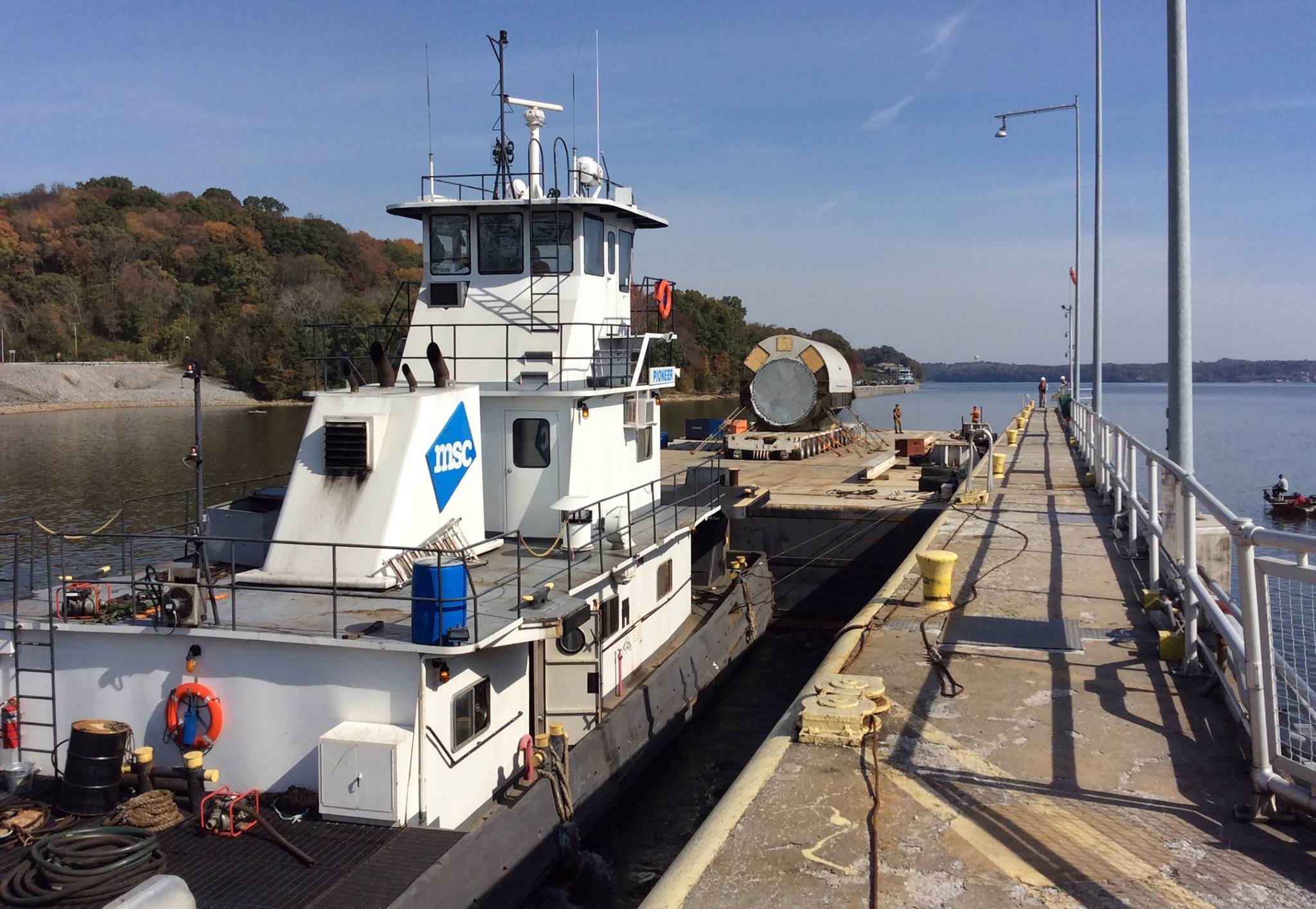The Chickamauga lock reopened Tuesday, restoring barge and recreational boat traffic to the upper third of the Tennessee River following an unexpected eight-day shutdown of the river artery.
The Army U.S. Corps of Engineers, which operates the 74-year-old lock, completed welds and steel reinforcements for the upper gate in less than half the time the agency originally expected it would take to fix cracks in the lock anchors.
At 1 p.m. Tuesday, the towboat Pioneer pushed through the repaired lock a 200-ton generator stator being shipped to TVA's Kingston Fossil Plant upstream on the Clinch River.
Matt Emmons, lockmaster at the Chickamauga Dam, said repair crews have worked around the clock to assess and ultimately re-weld and upgrade a cracked support beam on an anchor to the upper gate of the lock. The crack was discovered during a routine inspection last week.
The U.S. Army Corps of Engineers, which operates the lock, worked with engineers from TVA to assess the damage and come up with a correction program by the end of last week.
Originally, the Corps had expected the lock could be out of service for up to three weeks of repairs. But the problem was fixed in less than half that time.
"We were able to reopen the lock at 1 p.m., (Tuesday) and we're working now to move the barges that have been held up for the past week to get through the lock," Emmons said. "We've got some barges backed up, and we'll be moving them through as they come to the lock."
Serodino Inc., the Chattanooga-based barge operator that regularly hauls goods between Chattanooga and Knoxville, was forced last week to lay off the 16 employees that staff the tugboat that pushes barges along the upper portion of the Tennessee River.
Pete Serodino, who runs the barge company started by his father, said work crews were being called back to their jobs Tuesday once he learned of the reopening of the Chickmauga Lock.
"We're back in the saddle again," he said. "We're delighted to be back in business."
The aging Chickamauga Lock suffers from concrete growth in the rock aggregate that the Tennessee Valley Authority used in the 1930s to build the lock in Hixson. The Corps of Engineers, which took control of the lock in the 1980s, is using "aggressive maintenance," including extra anchor bolts and supports in the chamber walls, to preserve the lock while a new and bigger replacement lock is built.
But work on the new lock was halted nearly three years ago when funds for such projects ran short in the Inland Waterways Trust Fund. Congress revamped the funding formula for the trust fund to provide extra money this year, but the Chickamauga Lock replacement is still behind bigger and more expensive projects at the Olmsted Lock and Dam on the Ohio River, the Lower Monongahela River in Pennsylvania and the Kentucky Lock in Western Kentucky.
The Corps estimates it will cost about $674 million and take six years or more to finish the new Chickamauga Lock.
Contact Dave Flessner at dflessner@timesfreepress.com or at 757-6340.

